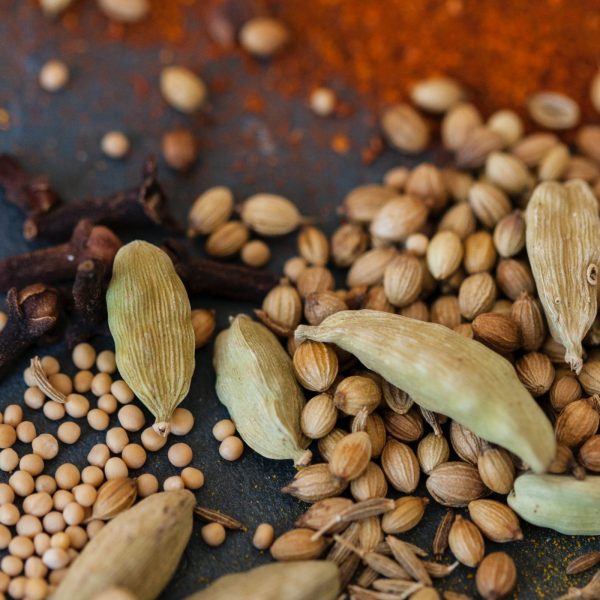Seed cycling is gaining momentum in the natural health world to help balance hormones and improve the menstrual cycle. You may be thinking seed what? Cycling, oh I don’t do that at the gym! Know that seed cycling is all about eating certain seeds (yes, the foods) in your daily diet at specific times throughout the menstrual cycle. It’s being recommended for everything from hormone related acne, to PMS, menstrual cramps, irregular cycles and infertility, but how does it work? Can seed cycling really benefit fertility?
It’s important to keep in mind that natural therapies like seed cycling are nutritionally supportive choices and that it may take time to reap the rewards. In addition, for complex fertility issues, seed cycling may be only one of the avenues you need to pursue for renewed health and fertility. Still, seed cycling is very easy to do, and enhances your Fertility Diet with essential fats!
Seed Cycling Basics
The basic concept of seed cycling is simply to consume flax, pumpkin, sesame and sunflower seeds at specific times during the menstrual cycle to promote hormone balance and support the phases of the menstrual cycle according the Annie Hall, Herbal Academy General Manager.
Here’s why it works:
“The concept is fairly simple: The seed hulls contain lignans, which are chemicals that help bind up excess hormones, while the seed oils contain essential fatty acids that provide the building blocks for making hormones,” states Nicole Jardim, renowned Women’s Health & Functional Nutrition Coach.
1) Lignans in seeds have gentle phytohormone activity, which help to eliminate excess estrogen, a common concern linked to genetics, excess body fat and chemicals in the environment.
2) By balancing estrogen levels, seed lignans help to encourage healthy hormone balance.
3) Seeds are an excellent source of essential fats, which your body utilizes in its own natural hormone production.
- During the follicular phase (the first half of the menstrual cycle), flax and pumpkin seeds are used to balance excess estrogen and encourage progesterone production for normal ovulation. Flax seeds are an especially rich source of lignans that bind to excess estrogen to help the body eliminate it. Pumpkin seeds are used for their essential fats and zinc content, important for progesterone production.
Hall shares, “…a study in 1993 found that women taking one tablespoon of flax powder daily lengthened the luteal phase (latter half of the cycle) and resulted in fewer anovulatory cycles (months with no ovulation). The researchers determined that while flax had no significant effect on luteal phase progesterone concentrations, “the luteal phase progesterone/estradiol ratios were significantly higher during the flax cycles” (Phipps et al., 1993).”
- During the luteal phase (the second half of the menstrual cycle), switch to sesame seeds and sunflower seeds. Sesame seed lignans help balance excess estrogen but are not as potent as the flax seeds used in the first phase. Sunflower seeds offer natural selenium content for liver support and hormone regulation as the menstrual cycle comes to an end.
How To Use Seed Cycling To Fit Your Cycle
We know there are many varying cycle lengths and each woman may ovulate on a different cycle day.
- For women with 28-30 day cycles, start your follicular seeds from cycle day 1 (the first day of your period) to around day 14 (or whenever you know you ovulate). Switch to luteal phase seeds after ovulation (around day 15 to day 28 or 30).
- If a 20-24 day cycle is normal for you, chart your cycle and follow the seed cycle recommendations for your specific follicular and luteal phase patterns.
- For women with irregular cycles, experts from Laura’s Natural Life suggest beginning your follicular seeds at the next full moon and switching to the luteal seeds 14 days later. Click the following link for our guide to BioRhythmic Lunar Fertility Charting if interested.
Tips for Seed Cycling
1. Invest in a good grinder (a coffee grinder used only for seeds/nuts works great).
2. In order to benefit from the oils and lignans, buy organic, raw, whole seeds and grind them immediately before adding them to your favorite foods choices. Otherwise, your seeds may pass through your digestive system completely undigested.
3. Aim to consume 2 tbsp of ground seeds daily, using equal amounts of the suggested seeds for each phase of the menstrual cycle you’re in.
4. Fresh ground seeds can be added to many delicious foods! A few of our favorites: Fertility Smoothies, yogurt, oatmeal or homemade granola bars, homemade salad dressings too.
5. If you’re using raw seeds, you can soak them overnight for easier digestion. After soaking, rinse them and drain well, then dry roast them in the oven for 10 minutes at a heat no higher than 300o fahrenheit.
6. Seed oils become rancid over time. To preserve the freshness of your seeds, store them in the refrigerator or freezer, especially if you’re grinding more than one serving of each seed at a time, and use them as needed.
Seed cycling round-up
Be consistent and give it time. Experts suggest it takes at least three complete menstrual cycles to experience changes and benefits from seed cycling. It’s a good idea to note your symptoms in a journal. I also recommend Charting your Cycle to see if you experience changes in your follicular and luteal phases.
Seed cycling is a convenient, affordable and nutritious choice to encourage healthy hormonal balance. Additionally, while we are still only learning about seed cycling, it may offer benefits with few (if any) drawbacks for fertility. Try it for yourself and share your story with us. We’d love to hear your feedback and experiences!
- A Beginner’s Guide to Seed Cycling: How to Balance Hormones Naturally. (n.d.). Retrieved from: http://www.laurasnaturallife.com/latest/a-beginners-guide-to-seed-cycling-how-to-balance-hormones-naturally
- Seed Cycling For Hormonal Balance – Herbal Academy. (n.d.). Retrieved from: https://theherbalacademy.com/seed-cycling-for-hormonal-balance/
- Jadim, N. (January 20, 2019). Is Seed Cycling For You? Retrieved from https://nicolejardim.com/seed-cycling/
- Iris. (2015, Oct.) Seed Cycling: Your Way To Happy Hormones. Retrieved from: https://www.cycleseeds.com/single-post/2015/10/11/Seed-Cycling-your-way-to-happy-hormones





